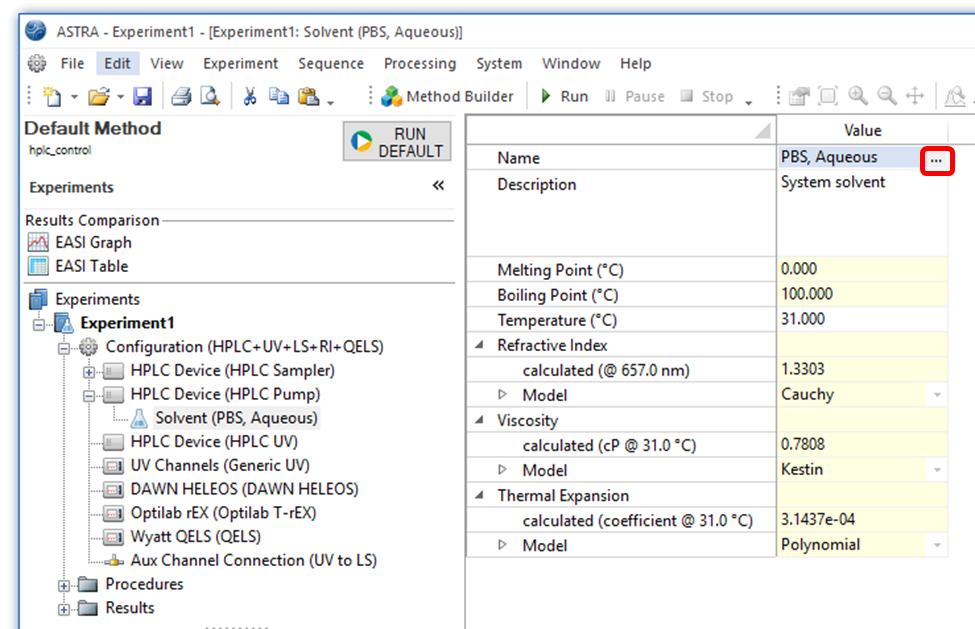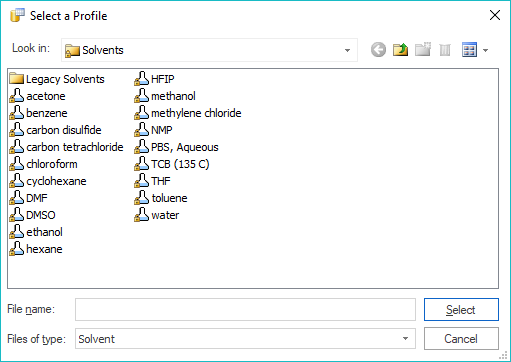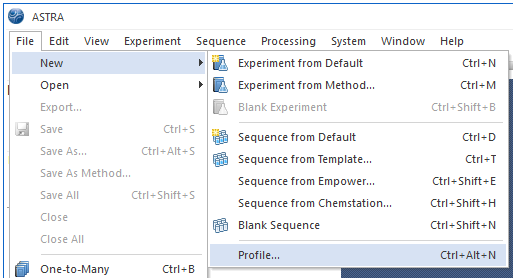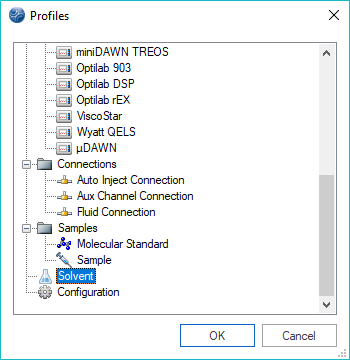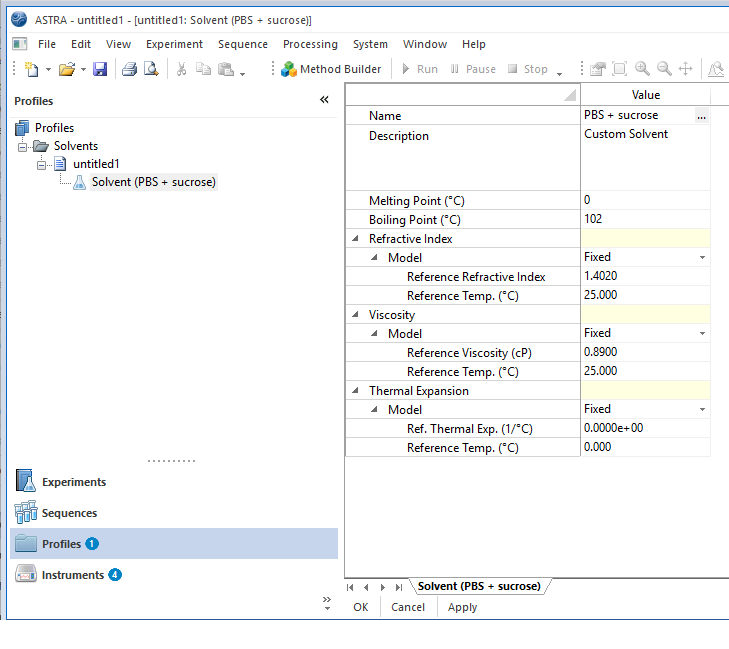I’m using a new solvent for my SEC-MALS runs. How do I add this solvent information to ASTRA™

Introduction
To accurately determine your sample’s molar mass, ASTRA needs information about the solvent. The amount of light received by the detectors is dependent on the absolute refractive index (aRI) of the solvent and the refractive index (dn/dc) of the sample. The scattering angles collected by the detectors also change based on the solvent aRI. If you will be using online DLS to calculate the hydrodynamics radius (Rh) of your sample, you will also need to enter the solvent viscosity.
ASTRA already comes equipped with many commonly used solvents. You can select your solvent in an ASTRA experiment by navigating to the Configuration > Pump > Solvent window and clicking on the ellipsis.
For many aqueous buffers, using the pre-defined PBS solvent is usually fine unless an additive significantly changes the refractive index compared to PBS.
Creating a new solvent profile
If you want to add a solvent to ASTRA, Navigate to File | New | Profile to open the Profiles dialog box. Scroll to the bottom of the dialog box and choose Solvent. Click on OK.
Editing a new solvent profile
A profile to create your solvent will appear. The minimum parameter you will need to know is its absolute refractive index. If you have an Optilab™, you can use it to determine the aRI of your mobile phase simply by running it in Purge mode and going to the aRI tab on the front panel. If you are collecting DLS data, then the viscosity is also required as a parameter in the calculations for diffusion coefficients. You can find a free program on the internet called SEDNTERP that is useful for calculating the viscosities of various buffers. The example below shows a custom solvent of PBS + sucrose.
When you’ve entered the necessary parameters, press Apply. Then click on the Solvent name and choose File| Save As. Save your solvent in a folder such as “Custom Solvents.” Your solvent is now ready to use, either to replace a solvent in a pre-existing experiment or to create a new method for future use.
Conclusion
These instructions only address solvents at a constant temperature with Fixed models for each parameter. If you are operating at varying temperatures, you may want to use models that address temperature dependence. Contact Wyatt Customer Support for more information.
Do you have a question? Contact our experts here in Customer Support. We’re happy to help! Call +1 (805) 681-9009 option 4.

